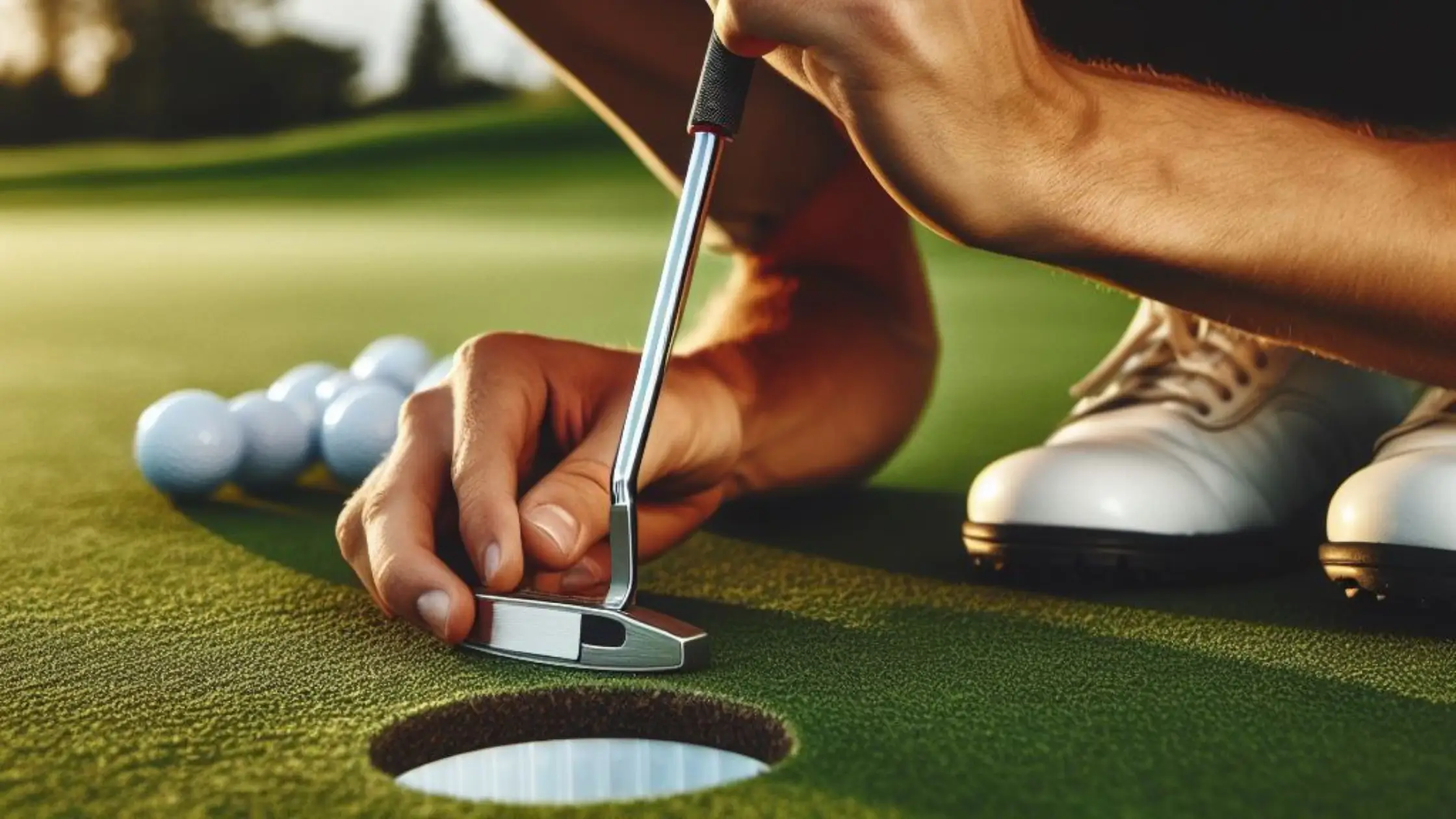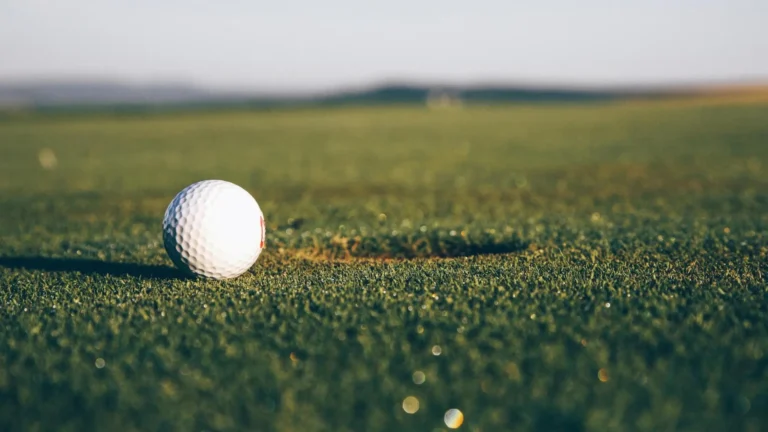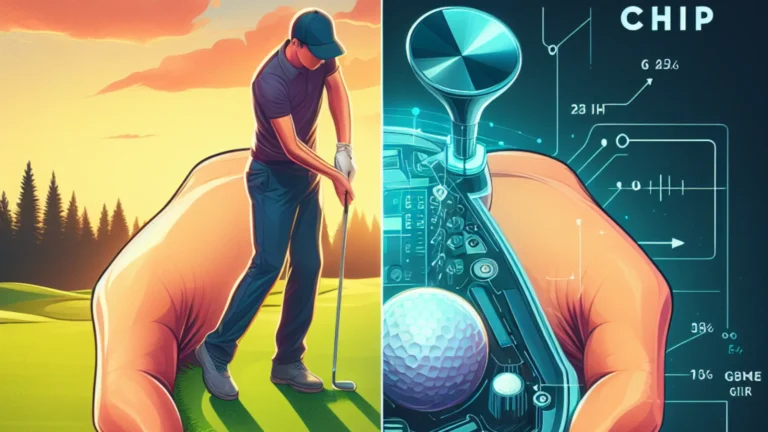Golf Putting Tips for High Handicappers to Lower Their Scores
For many high handicap golf putting tips is one of the most difficult parts of the game. Constant 3-putting and missing short putts can derail rankings and enjoyment of the game. While full swing and longer club skills are important, improving putting may be the fastest way for novice players to lower their scores.
Applying some basic techniques and best practices to the greens can result in more one-putts, fewer blow-up holes, and more pars to be proud of.
This article covers golf putting tips for the bogey golfer. Use these pointers to improve your proficiency with one of golf’s most intricate skills. A few minor changes can result in dramatic differences when rolling the rock. Continue reading to learn how to sink more putts and improve your handicap index quickly.
Establish a Consistent Routine
Similar to free throws in basketball, developing a stepped routine before hitting all putts promotes consistency. Settling in over the ball at random almost always results in unpredictable outcomes. Follow this consistent sequence before each putt:
Take Your Stance: Approach the ball from behind and take your putting stance, resting the putter shaft on your thigh to determine the proper distance. Place your feet about shoulder-width apart, knees slightly flexed.
Read the Green: From behind the ball, visualize the path you expect the putt to take based on the slope and grain of the green. Crouch down to read the green from putter head level, as the ball approaches from this lower angle.
Align Properly: Position the putter face perpendicular to your intended starting line, not the ultimate target. Align the clubface and body with the initial read path, and adjust your aim point accordingly.
Trust Your Read: Address the ball, visualizing the path required. Determine the speed and stroke feel necessary for distance control. Believe your reading is correct and commit to the action.
Quiet Your Mind: As you prepare to move, clear out any excess swing thoughts, doubts, or worries. Self-talk should be kept to a minimum now. Allow your subconscious to putt naturally as a result of all that practice.
Make Your Stroke: Swing the putterhead back and then smoothly through the ball following the path you pictured. Maintain your finish position while watching the ball travel towards the target.
A consistent, repeatable routine eliminates variables before strokes. Your focus shifts to starting the ball online and at the proper speed, rather than technical tweaks. To simplify the process, follow these steps for both 3-footers and 30-footers. Consistency results from taking an orderly approach.
Improve Green Reading Skills
Most high handicap players’ putting problems stem from a lack of ability to read greens. Understanding slopes and grain effects requires practice, experience, and enhanced vision. Improve your green-reading skills with these tips:
Watch the pros: Watch televised golf to see how the best readers visualize and rely on lines for breaking putts. Try to anticipate the break before their putts and learn from any different reads.
Create Imaginary Putts: When practicing or playing, visualize the path the ball will take from various angles. Consider the speed and break required, rather than just the end result.
Use Alignment Aids: Use a clubface or ball-width notch on your ball to mark your starting path, making it easier to align and visualize. Bottlecaps, coins, and tees can serve as intermediate targets.
Ask More Questions: If you are unsure, don’t be afraid to ask more experienced partners to explain the reads. Get more feedback, eventually relying primarily on your own reading.
Putt to the Picture: After taking your stance, capture a freeze-frame of the expected track and stroke the ball down it. Keep your attention focused on that image.
Better routines, alignments, and visualizations help the brain compute proper lines. Trust that with dedicated observation and imagery training, your green-reading skills will improve.
Practice Proper Pace and Distance Control
Pace refers to the speed of a putt, which is typically measured as the time it takes from impact to travel 17 inches. Distance control entails consistently leaving next putts within striking distance. Both characteristics are dependent on the speed, slope, and conditions. Use these activities to practice putting:
Putt with Challenges: Repeating the same length putts develops poor pace habits. Change up the drill lengths, break amounts, and targets. To avoid boredom, introduce new challenges.
Lag Longer Putts: Gradually increase the distance of practice putts to 40 feet or more. Aim to finish within 3 feet without worrying about holing putts. Develops a feel for hitting softer through break.
Place Alignment Sticks: Use yardsticks or cut piping to outline making and missing pace zones from various angles, ensuring putts land in the proper spots.
Read Practice Green Speed: Before each session, stroke a few putts to assess the speed and condition of practice putting surfaces in comparison to real greens. Adjust the touch accordingly.
Uphill/Downhill Putts: Draw sloped lines with towels or wooden boards. Control your speed when faced with changing elevation putts that break less or more.
Varying practice scenarios improves the ability to adapt to the inconsistent turf speeds found on different courses. Grooving distance control distinguishes better green readers from truly exceptional putters capable of converting birdies.
Choose a Putter That Matches Your Stroke
Choosing an ill-fitting putter can cause golfers to miss more putts. While no club can miraculously make putts, determining the best pairing for your stroke style improves consistency. Factors such as length, lie angle, grip type/size, weighting, and alignment all contribute to individuals’ overall impact effectiveness.
Analyse Your Tendencies: During practice sessions, note stroke patterns and mannerisms. Capture video on your phone as evidence if it feels different than expected.
Obtain Fitting Analysis: Consult an expert club fitter with appropriate digital equipment (SAM PuttLab, Vector Pro) to recommend quantitative customizations that improve performance.
Prioritize Proper Length: The ideal putter size allows your eyes to hover just behind the ball at address while keeping your feet shoulder-width on the ground without strain. Arms hang straight down from the shoulders, hands even in front of the body.
Consider Counterbalanced: For some players who struggle with twitchiness and speed inconsistencies, adding weight to the grip end calms their hands during the stroke.
Check for Toe Hang: The way the face points when balanced loosely on the fingers indicates the need for rotation and arc matching in golfers. Although alignment is not required, it can help.
Extensive Model Testing: Whether purchasing new putters from fitters or attending demo days, putt with multiple models on real practice greens to determine preferences closest to your eye and kinesthetic senses.
Dialing in an appropriate putter provides an efficient tool for executing strokes without the use of fighting equipment. Rolling true putts with confidence towards targets becomes easier.
Improve Setup Posture and Ball Position
Sound putting is dependent on proper technical alignment prior to the stroke. Prepare for success by implementing optimal posture and contact fundamentals:
Stand Tall and Relaxed: Eliminate unnecessary tension and forward lean from the shoulders or hips, which reduces rotational freedom.
Grip lightly: To feel the weight of the putter, swing with the big muscles in your shoulders and arms rather than your hands and wrists.
Use Ball Positioning Guidelines: Position the ball between the middle of the stance for short putts and just inside the front heel for long lag putts. Change the contact point based on the distance.
Check Lie Angle Fit: Verify proper lofting up through impact by ensuring the sweetspot hits the ball and is evenly ground during straight putts rather than digging the leading edge or bouncing the toe.
Set Eye Position Consistently: Select intermediate alignment targets that ensure eyes remain in the same location inside the ball at address for all lengths.
Neutral Forward Press: Apply gentle forward pressure to the hands at address, then retreat just before takeaway to stabilize movement initiation.
Fundamentals must naturally sync in order to free the body’s motor system from technological disruptions. Balanced posture and precise ball placement have a significant impact on directing the putterhead down the intended path.
Drill a Square Putter Path
Curving the swing path is unnecessary and makes hitting center-start lines extremely difficult. Ensure that your back and forward strokes move the face perpendicular to the targets and follow the proper trace. The committee will train a straightline delivery using the following practice aids:
Place Rods Behind Balls: Position alignment sticks directly behind and through the intended start lines to indicate whether the path deviates offline.
Set Obstruction Gates: Begin strokes between pool noodles, tee pegs, or other objects to provide visual/tactile feedback on whether the clubhead is inside or outside.
Use Drawing Board Gates: Narrow your swing by tapping towel-covered boards that are just wider than your shoulders, and feel for when you’ve gone too far either way.
Follow Paint Lines: Use existing lines/edges on practice carpets to define the correct motion plane. Useful even without the ball.
The simplest stroke traveled online trumps excessive face manipulation while curving around objects. Building neuromuscular awareness of squaring the path leads to increased reliability. Maintain your focus and avoid being concerned about blocked putts.
Improve Touch with the Golf Game.
The “Golfy Game” drill, developed decades ago by legendary instructor Harvey Penick, improves feel for green speeds and distance control. It can be played solo or in groups:
Find a Flat Putting Surface: Use a practice green with minimal slope or break so that putts roll relatively straight.
Take turns from five spots: Position spots about 5-10 feet apart from which players will putt in order during the game. These function similarly to golf tee boxes.
Putt & Take Score: The first person putsts from Spot 1, aiming to finish as close to Spot 2 as possible, with the next stroke coming from that stopping point. Players take cumulative scores, attempting to total the fewest putts possible across all stations in one lap.
Vary Distances: Once everyone understands the game flow, lengthen or shorten the distance between spots to change the difficulty based on skill level.
Offer Rewards (Optional): To encourage participation, consider instituting penalties or small wagers for high scores or rewards for low totals, similar to traditional golf “skins” games.
The Golfy Game conditions are ideal for lagging balls close to targets while changing lengths with no regard for results. Instead of making mechanical adjustments, focus shifts to iterating smooth strokes at a precise speed. Varying distances constantly test visual imagination and technical execution.
Other Tips for Becoming a Better Putter
A few more quick pointers to round out golf instruction for improving on the greens:
- Spend more time practicing putting rather than full swing. Proficiency in the short game leads to a dramatic handicap improvement.
- Scan putts from both behind the ball and in the hole to get multiple reads on breaks.
- Change the ball position alignment slightly until you can hole more putts. You may have a natural tendency to deviate slightly from the norm.
- Invest in quality practice balls with a consistent roll rather than recycled scuffed balls that behave erratically.
Read “Dave Pelz’s Putting Bible” or watch YouTube compilation videos of the short game guru who instructs pros.
Conclusion
Implementing even a few improved golf putting tips and deliberate training habits can yield quick results for high handicap players.
Competence on and around the greens leads to more one-putts, fewer blowup holes, higher pars, and renewed confidence in your scoring ability. Trust that improved putting proficiency will result in a renewed enjoyment of golf as triple digits are reduced to doubles.







